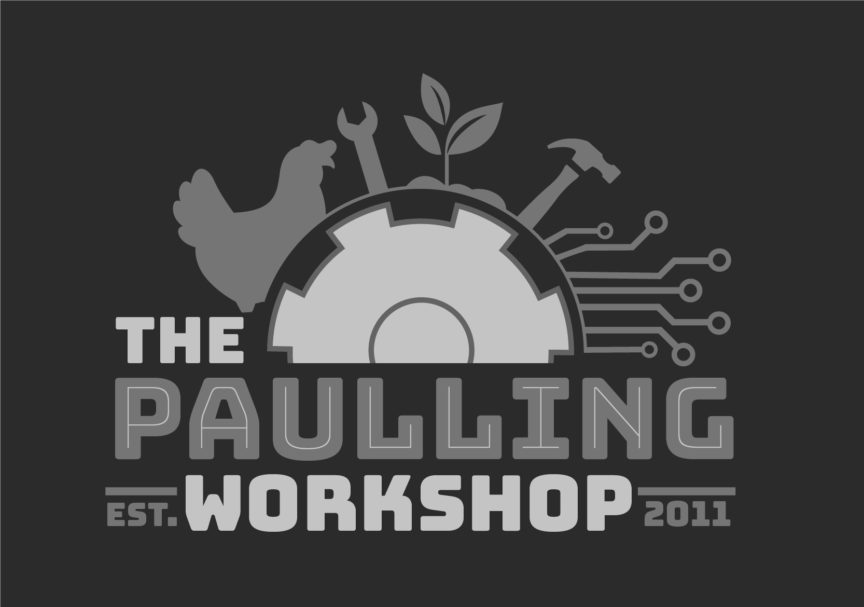If you’re just getting started with making and building stuff, you’re going to need a handful of essential tools to get started. Getting into DIY project isn’t cheap, but it doesn’t have to be expensive. Below, I’ve categorized all of my essentials of making stuff into various sections, depending on what you need to do.
Why Should You Take My Advice:
There are tons of resources out there for beginning tools to pick, and I firmly fall into the hobbyist category. I’m not a contractor, professional furniture builder, or construction worker, but I am a mechanical engineer by day and I really enjoy tearing stuff apart to see how it works and why it’s better or worse than something else.
My picks below are based on what tools I use, chosen based on the following criteria: Inexpensive but not cheap, Long (enough) lasting, and accurate. You won’t find $400 contractor saws listed below. I don’t have the money or the need for something like that, but you can also find cheaper alternatives to my choices.
Hand Tools vs. Electric Tools:
There are many woodworkers, purists, who make exceptional pieces with only hand tools, and there are many woodworkers who would rather spend money on powerful electric tools to get the job done faster. I myself am in that second camp, but there are plenty of hand tools that are essential. That’s enough preface so let’s get to it:
Measuring Tools
12″ Combination Square : This is the main tool you will use to lay out straight lines for cuts and check to ensure that the cuts came out accurate and square. It’s probably the most used measuring tool you will own.
12′ Tape Measure : I know they make longer measures, but the longer you get, the heavier and bulkier they get. A 12′ measure is more than enough for any garage sized projects and is light enough to hold with one hand while marking measurements.
Speed Square : This is the tool I always keep on hand when putting two pieces at a 90 degree angle. Stick this in the corner, clamp them together, and screw/glue in.
Laser Level : This thing has saved me a LOT of time when hanging anything on the wall or lining two things up with each other. Don’t use it all the time, but it’s wonderful.
Cutting Tools
Jigsaw : This saw is primarily a curve cutting saw. With the right blade, you can cut any material, and blades for a jigsaw are cheap.
A 10″ Miter Saw : Potentially one of the more expensive items in a shop, a good miter saw makes short work of cross cuts (my most common cut) and miters. A 10″ miter can handle 1×8 stock, but if you know you will have bigger needs, try a 12″ miter saw, or potentially a sliding miter saw. Prices WILL go up though. A “compound miter” means the blade can tilt in two directions: across the face of the board AND across the thickness. Generally this is used by contractors installing crown moulding.
7 1/4″ Circular Saw : Best for ripping long, solid wood and cutting plywood down to a manageable size. These are incredibly portable, incredibly precise, and, hopefully, lightweight. A 7 1/4″ saw can cut deeper than other, smaller saw, and cut cleanly through 2x stock.
A Word About Battery Powered
Battery powered saws are everywhere, and can be very handy when you just need to make a couple cuts, but the cutting power and amount of time you can use the tool are greatly reduced when compared to a corded saw. Nothing is worse than having to put a project on hold because you need to charge the batteries.Boring Tools
Power Drill : Corded or Cordless, these are both the most common type of household tool, and one of the most useful. If you start with anything on this list, start with this. Cordless drills usually have a clutch to set torque for careful driving of screws or hanging pictures, while corded models have a tremendous amount of torque controlled by the trigger. They can be used to drill holes with bits, or drive screws, or even attach special tools like sanding drums to sand small openings. I prefer a keyless chuck, which means you can install and remove bits without a special tool, saving time.
Bench Press : A more elaborate and accurate tool than the hand drill, a bench press is used for lots of drilling operations. It allows you to be very precise and straight, much more so that trying to eyeball straight down with a hand drill. There are also a ton of attachments you can get to add functionality: sanding drums, metals rasps, and even a vertical lathe attachment.
Fastening Tools
Hammer : If you’ve never been in the hammer section of a hardware store, you may be surprised to hear how many hundreds of types of hammers there are. I have nearly 20 types, but there are really just a few you need for most purposes.
Interesting History about Nails
You’ll likely see a denotion of “2d” or “5d” on a box of nails. That “d” is the English unit for ‘pennyweight’. So a two-penny nail is 2d and is 1″ long. For every penny you add, the nail gets 1/4″ longer. So a 3d nail is 1 1/4″, and 4d nail is 1 1/2″, and so on. And here is how you determine which nail length you need: Determine the thickness of the board you are driving through in 1/8ths, so a 1″ thick board would be eight/eighths. Pick a nail where the pennyweight matches that thickness. An 8d nail for 1″ stock.Screwdriver : It may be tempting to buy those bargain screwdriver sets, but I can tell you for a fact that cheap screw drivers fall apart SO easily, and I’ve been through hundreds of replaceable tips just because they bend when too much pressure is applied. The best thing to do is get a comfortable, good quality handle that accepts replaceable bits, as these bits are cheap, and you can buy an incredibly wide variety of them. I literally have hundreds, to the point where keeping them organized should be its own post. My most two commonly used bits are the #2 Phillips and the square drive bits of pocket hole screws.
Clamps : If you have more than two arms, you’ll be an exceptional furniture maker. For the rest of us, we need a collection of clamps to hold things together while we move around and grab tools. I typically have never needed more than 6 clamps at once, and here I recommend getting some “F” type clamps of various lengths. These slide up and down easily to get into position and can be tightened with one hand while the other holds the pieces where you need them.
Finishing Tools
Rasp and File : These are your basic freehand shaping tools for wood and metal. They are nearly the same thing, but a rasp is a courser tool you use before you turn to the file. In olden times before a lot of power sanders, there would be thousands of rasps to choose from, but now there are just a few and they are relatively unused in the typical home garage. But I love them for focusing on specific, small areas of a piece. It’s like an ancient dremel tool. These are perfect for smoothing up areas left rough by a jigsaw.
Random Orbit Sander : Good sanding is crucial to a good finish on a piece. If you’re building anything for the inside of your house, you’re going to spend more time than you expect going through different grits of sandpaper, progressing to finer and finer grits until you get the perfect, smooth finish. Also, sanding is a terrific arm workout and you’ll get very tired of doing it by hand. A random orbit sander (circular or 1/4″ sheet) can drastically simplify the work your body needs to do and you’ll thank me tomorrow.
Sandpaper : Generally, you’ll need 60, 120, 150, and 220 grit sandpapers. 60 is for very rough smoothing, 120 is the most common starting place, and progressing all the way to 220 creates a very nice finished surface and imparts a softness to the wood.
Routers and Router Bits
The Router : Originally, I put this in the “Specialty Tools” area of the site, but I got one of these recently and now use if for literally every wood project. This tool lets you do so much, from creating grooves for things to mount in, to routing out areas for flat panels to fit in, to cutting decorate edges. There is a router bit for everything, and a hundred different ways to use this tool. I recommend you watch some youtube videos on what can be done with it, but here are the basics. You can get either a plunge or fixed base. A plunge base allows you move the tool up and down vertically on the surface, allowing you to create deeper and deeper cuts, and I highly recommend getting one that does that.
Router Bits : My recommendation is to get an inexpensive set in different profiles. Learn which of the bits profiles you use the most and purchase better quality bits in that profile. I prefer roundover edge bits, a 45 degree edge bit, and a flat rabbiting bit, so I would buy a higher quality, longer lasting bit in those types, and keep the less expensive bits for the occasional use.

